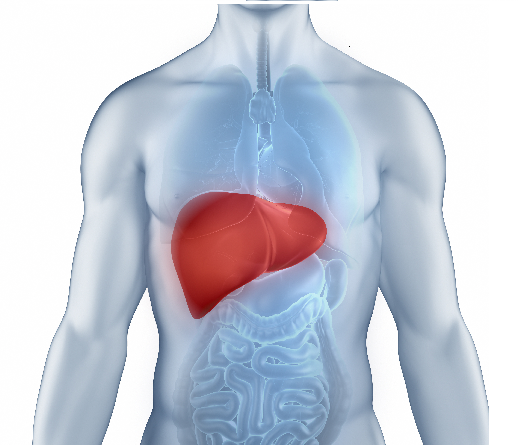Understanding Myeloid Leukemia: Symptoms & Diagnosis

Leukaemia is a cancer that affects an individual’s bone marrow and blood. Myeloid cancer develops from granulocytes and monocytes, which give rise to white blood cells. Variations of this condition include acute myeloid leukaemia and chronic myeloid leukaemia. This article discusses myeloid leukaemia, its symptoms, and its diagnosis.
What is Myeloid Leukaemia?
Different types of leukaemia are often distinguished based on the affected cell types. Myeloid or myelogenous leukaemia refers to cancer that develops from myeloid cells. The disease is further classified by the speed at which it progresses, including acute (progressing more rapidly) and chronic (progressing relatively slower).
What is Acute Myeloid Leukaemia?
Acute myeloid leukaemia (or AML) is a form of cancer that begins in the blood or bone marrow, affecting specifically the white blood cells. AML causes white blood cells to grow abnormally, and the word “acute” in this term refers to the rapid progression of this disease. Other terms for AML include acute myelogenous leukaemia, acute myeloblastic leukaemia, or acute nonlymphocytic leukaemia.
What is Chronic Myeloid Leukaemia?
Chronic myeloid leukaemia (CML) is a form of blood cancer that begins in the bone marrow’s myeloid or stem cells. The term “chronic” denotes that CML is a slow-growing form of myeloid leukaemia that may go undetected in the earlier stages. However, it can be life-threatening without treatment and can sometimes also change into acute leukaemia, which is more difficult to treat.
What Causes Myeloid Leukaemia?
Myeloid leukaemia occurs when there is a genetic mutation or change in the growth of myeloid cells in an individual’s bone marrow. In acute myeloid leukaemia, blood cells grow out of control, hindering proper function and crowding healthy cells.
In chronic myeloid leukaemia, genetic mutations in the cells create a new fused gene known as BCR-ABL, which leads to uncontrolled growth of myeloid stem cells, making it difficult for the bone marrow to produce new normal red blood cells, white blood cells, and platelets.
What are the Risk Factors of Myeloid Leukaemia?
The risk factors for developing myeloid leukaemia depend on whether it is acute or chronic.
1. Risk Factors for Acute Myeloid Leukaemia
- Age: Acute myeloid leukaemia is more common in adults over 65. As age increases, the risk of developing AML also increases.
- Gender: Gender is a risk factor for developing AML. Women are less likely to develop it than men.
- Previous Treatment for Cancer: Previous exposure to radiation or chemotherapy can increase an individual’s chances of developing AML.
- Exposure to Radiation or Dangerous Chemicals: Individuals who have been exposed to high levels of radiation, such as nuclear reactor accidents, are at a greater risk of developing AML. Exposure to chemicals like benzene (found in cigarettes) is also a risk factor.
- Other Blood Disorders: Individuals who have other blood disorders, like polycythaemia vera or myelofibrosis, have a higher risk of getting AML.
- Genetic Disorders: Genetic conditions like Down’s syndrome are associated with a bigger risk of developing AML.
Not all individuals with myeloid leukaemia have been exposed to risk factors, and not all individuals with the above-mentioned risk factors will develop the condition.
2. Risk Factors for Chronic Myeloid Leukaemia:
- Age: CML is more common in older individuals than teens and children.
- Gender: Men are at a greater risk of getting CML than women.
- Radiation Exposure: Radiation exposure has been associated with CML.
What are the Symptoms of Myeloid Cancer?
The symptoms of myeloid cancer can vary depending on the type. Acute myeloid leukaemia symptoms include:
- Fever and bone pain
- Fatigue, weakness, or lethargy
- Shortness of breath
- Pale skin and easy bruising
- Frequent infections
- Unusual and frequent bleeding (such as frequent bleeding from the gums or nosebleeds)
Chronic myeloid leukaemia symptoms can be difficult to detect. They start mild and gradually worsen over time. Some common signs include:
- Weakness or fatigue
- Fever and night sweats
- Shortness of breath
- Feeling full without consuming much food and unexplained weight loss
- Swelling or discomfort in the upper left abdominal area (near the belly), located in the area of the spleen
How is Myeloid Leukaemia Diagnosed?
A myeloid leukaemia diagnosis may be made using the following tests:
- Blood Tests
Blood tests can measure the level of white blood cells in the blood or the presence of blast cells.
- Bone Marrow Tests
In a bone marrow test or biopsy, a small amount of bone marrow is removed and tested for abnormal cells.
- Lumbar Punctures
A small amount of spinal fluid is drawn and checked for leukaemia cells.
- Imaging Tests
Imaging tests like CT scans may be used to see if CML affects other parts of an individual’s body. Ultrasounds may also determine if the spleen is enlarged since this is a common sign of CML.
If an individual displays myeloid leukaemia symptoms, it is crucial to visit a healthcare professional immediately and book a leukaemia test with Dr Lal PathLabs.
FAQs
1. Can chronic myeloid leukaemia be inherited?
The gene that causes CML cannot be inherited. It is believed to develop only after birth.













